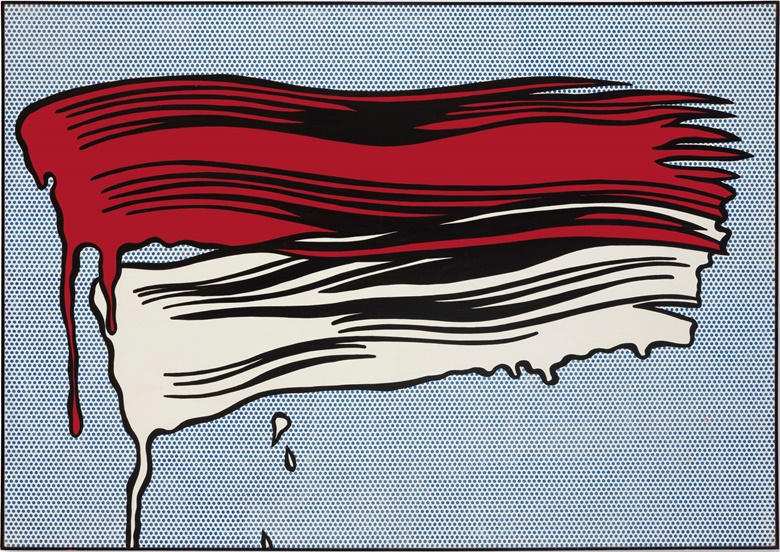Lichtenstein's brushstrokes
Roy Lichtenstein’s Red and White Brushstrokes
With his seminal Red and White Brushstrokes, offered on 17 May in the Post-War and Contemporary Art Evening Sale at Christie’s in New York, Roy Lichtenstein questioned the revered status of the painterly mark
A quintessential Pop painting, and one that questions fundamental beliefs about the artistic process, Roy Lichtenstein’s monumental Red and White Brushstrokes takes the essence of painting — the brushstroke — and frames it within the Pop idiom. In an apparent jibe at the impulsive and layered brushwork of Abstract Expressionism, here the brushstroke reappears, replete with drips and set against a field of Lichtenstein’s signature Ben-Day dots, as a gesture of control rather than spontaneity.
Lichtenstein’s Brushstroke series is in part a comment on the dominance of Abstract Expressionism — in particular the work of Willem de Kooning, Jackson Pollock and Franz Kline — at a time when autographical marks were regarded as the ultimate demonstration of the artist’s prowess. Lichtenstein began to challenge this hegemony by interpreting these spontaneous marks in a commercial, mass-produced style.
‘It’s taking something that originally was supposed to mean immediacy and I’m tediously drawing something that looks like a brushstroke,’ he explained. ‘I want it to look as though it were painstaking. It’s a picture of a picture and it’s a misconstrued picture of a picture.’
Red and White Brushstrokes announces Lichtenstein’s signature style, which did much to establish Pop art as one of the dominant movements of the post-war period. The original inspiration for the series came from a mass-produced comic book published by Charlton Comics. In the October 1964 edition of Strange Suspense Stories, ‘The Painting’, drawn by Dick Giordano, tells of a tortured artist and a painting that appears to take on a life of its own.
Lichtenstein was also greatly influenced by the Dutch painter Frans Hals. The Golden Age artist was particularly admired for his painterly style, his use of visible brushstrokes in turn inspiring the work of the Abstract Expressionists. Many years after the Brushstroke series was completed, Lichtenstein acknowledged that it was perhaps Hals’s work, rather than that of his New York contemporaries, that served as the greater influence.
Red and White Brushstrokes belongs to one of the most significant series from Lichtenstein’s long and prolific career, and is one of only a handful of the 14 works from this pivotal series to remain in private hands. Many of this group are now housed in major international museum collections. These include Brushstrokes at the Moderna Museet, Stockholm; Big Painting at the Kunstsammlung Nordrhein-Westfalen, Düsseldorf; Little Big Painting at the Whitney Museum of American Art, New York; Yellow Brushstroke I at Kunsthaus, Zürich; and Brushstroke with Splatter at the Art Institute of Chicago.
This seminal work will be offered on 17 May in the Post-War and Contemporary Art Evening Sale at Christie’s in New York.


Comments
Post a Comment